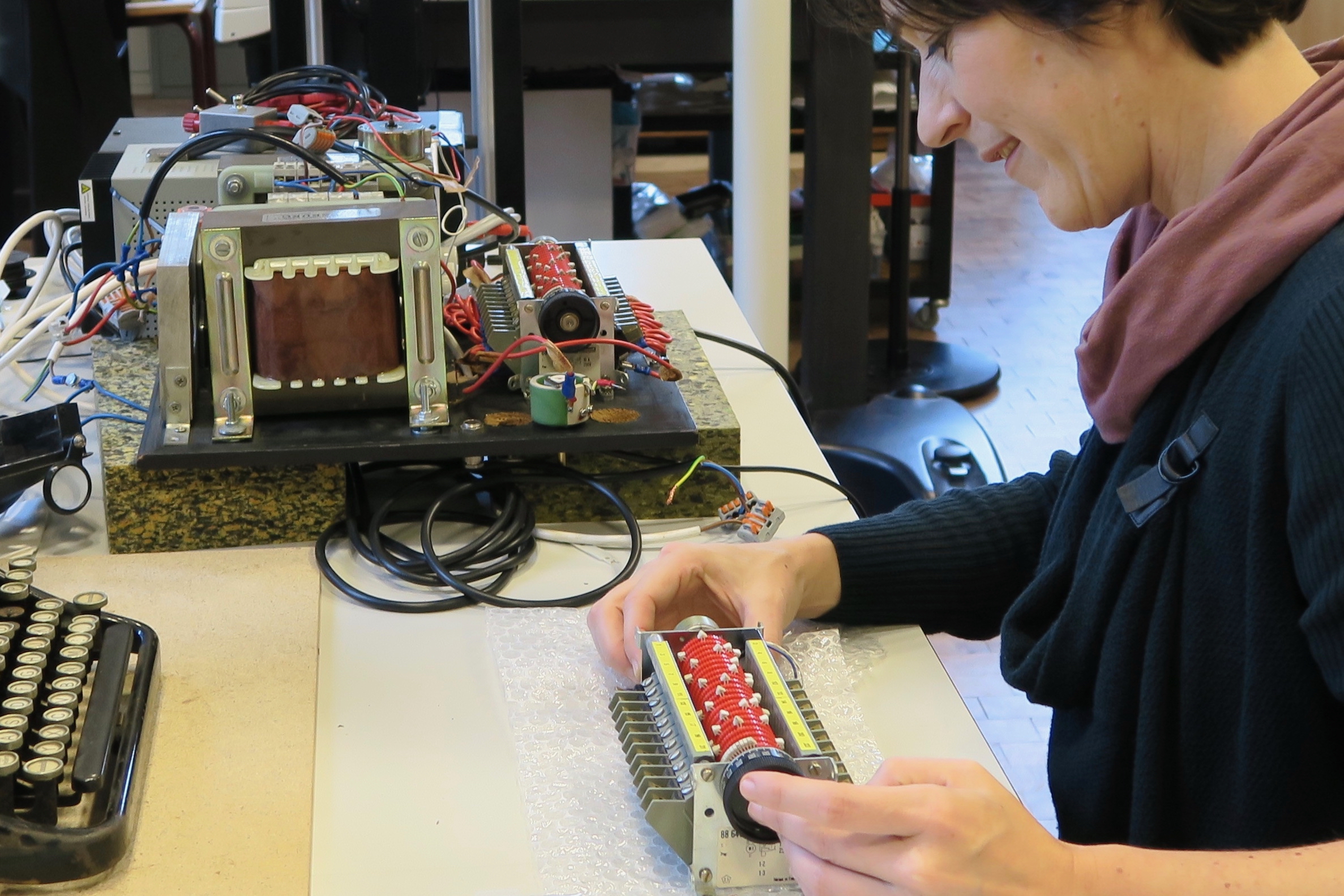
Rebecca Horn (1944-2024)
Choir of Locusts I, 1991
33 Typewriters, cane for the blind, metal brackets, electromagnets, motors, wiring
60 x 350 x 270 cm (without cane)
Hamburger Kunsthalle
Inv.-Nr. G-1991-6
Photo by B. Sommermeyer (2016)
About the conservation and restoration of Choir of Locusts I:
The kinetic installation Choir of Locusts I covers about the size of a small room. In this art installation by one of Germany's most famous sculptors Rebecca Horn a choir of 33 antique typewriters, welded on brackets at the ceiling of the gallery produces an incoherent, soft clacking sound. Their keys are punched by electromagnets, while small motors move the carriage return levers, or rock some of the typewriters slowly, resulting in a vaguely uncomfortable dangling. On the floor beneath a white cane blindly taps around, or directs the choir. The “brain” of the installation is a camshaft fitted with micro-switches. It regulates the punching of the keys as well as the tapping and pausing of the stick. In 2009 the installation stagnated majorly and the artwork was de-installed for conservation treatment.
Even though most mechanical parts can be repaired, it was quite a task to establish the right pace of movement in the work, in a manner as close to the original situation as possible. Some profound changes were made since the installation had first been installed at the Hamburger Kunsthalle in 1991. Some of these changes were with the artist’s involvement, and others without. The motors had been replaced several times and the rotational speed altered. Additionally, the potentiometer was broken and there were failures in the wiring circuit of electrical relays, motors, and electromagnets.
Technically speaking conservation treatment would involve replacing the second and third generation motors. Is it acceptable to favour the original motors over those added later, or are these visible components of the historical use of the installation as a work of art? Should the appearance of the new motors look like the original ones, therefore be artificially patinated? Would other forms of wear and tear, like broken keys, be acceptable and remain in place? By using oral history from the earliest available sources (in this case information from friends of the deceased Dutch former artist's assistant Hasje Boeijen), combined with a thourough assessment of the condition and technicalities of the work, the main features of the originally intended version of the installation could be retrieved. This formed the reference point for a conservation treatment plan. The aim was to restore the authentic chaotic rhythm of the work and prepare the installation for long term display. Its success lies in a combination of a conservation approach and regular maintenance.
The conservation treatment, which took place at the Hamburger Kunsthalle between 2015 and '16, was generously funded by the Wüstenrot Stiftung.